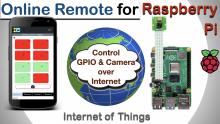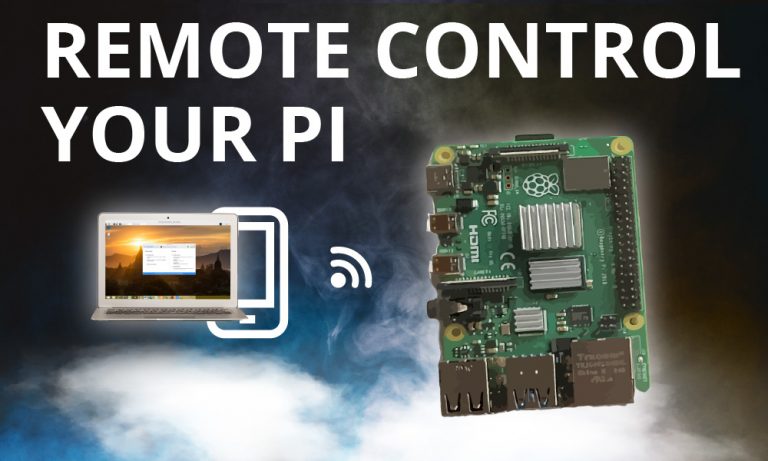The Raspberry Pi, a tiny yet powerful single-board computer, has revolutionized countless projects, from home automation and media centers to educational tools and IoT prototypes. Its versatility is unmatched, but one of its most significant advantages, and often a necessity, is the ability to manage and control it remotely. Imagine monitoring your smart garden, updating your home server, or troubleshooting an IoT device without being physically present. This capability is especially useful for projects that require continuous monitoring or are deployed in hard-to-reach locations.
With the rapid rise of IoT (Internet of Things) solutions and the increasing prevalence of remote work, finding efficient and reliable ways to manage your Raspberry Pi from afar has become not just convenient, but essential. Developers, hobbyists, and professionals alike rely on Raspberry Pi for various projects and applications, making remote access a critical skill. The good news? You don't always need to invest in expensive software or services to achieve this. This comprehensive guide dives deep into the world of free remote Raspberry Pi management, exploring the best options, their features, and how they can transform your workflow, allowing you to unlock the full potential of your Raspberry Pi without being physically present.
Why Remote Raspberry Pi Management is a Game-Changer
The ability to control your Raspberry Pi devices from anywhere in the world offers unparalleled flexibility and efficiency. Here’s why it’s a game-changer for so many:
- Uninterrupted Project Monitoring: For projects that demand continuous oversight, such as environmental sensors or security cameras, remote access ensures you can check status and collect data anytime, anywhere. This is one of the key benefits of using a Raspberry Pi for projects that require continuous monitoring.
- Enhanced Accessibility: Whether your Pi is tucked away in a server closet, deployed in a remote field, or simply in another room, you can access its desktop and command line directly from any browser, PC, or smartphone. This provides control over your remote Raspberry Pi from anywhere.
- Streamlined Development & Troubleshooting: Developers can deploy and debug code, update software, and troubleshoot issues without needing to physically connect a monitor, keyboard, and mouse to the Pi.
- Scalability for IoT Solutions: As the demand for IoT solutions grows, the ability to control and monitor multiple Raspberry Pi systems from afar is more critical than ever. You can manage and monitor IoT devices, set cloud alerts, and even run batch jobs on them. This provides remote access to IoT devices.
- Cost-Effectiveness: By leveraging free tools and strategies, you can achieve robust remote management capabilities without incurring additional costs, making it accessible to everyone.
Core Free Remote Access Methods for Raspberry Pi
When it comes to free remote access, two primary protocols stand out, offering both command-line and graphical interfaces:
Secure Shell (SSH) for Command-Line Control
SSH is the backbone of remote server management and is an absolute must-know for any Raspberry Pi user. It provides a secure, encrypted connection to your Pi's command line, allowing you to execute commands, transfer files, and manage your system as if you were sitting right in front of it. It's lightweight, efficient, and incredibly powerful.
How it works:
- Enable SSH on your Raspberry Pi: This can be done via the Raspberry Pi Configuration tool in the desktop environment or via
sudo raspi-configin the terminal under Interface Options. - Connect from a client: On Linux or macOS, you can simply use the built-in Terminal. On Windows, tools like PuTTY are popular, though Windows 10/11 now includes an OpenSSH client.
SSH remote IoT device Raspberry Pi free download refers to the process of using SSH to remotely access and manage your Raspberry Pi through various platforms and methods, all without incurring costs. Many cloud-based IoT platforms also leverage SSH in their free tiers for device management. Consider some of the frequently asked questions about SSH remote IoT and Raspberry Pi, as it's a fundamental method for remote control.
Remote Desktop Protocol (RDP) for Graphical Interface
While SSH is excellent for command-line tasks, sometimes you need the visual feedback of a desktop environment. This is where RDP comes in. RDP allows you to connect to your Raspberry Pi's graphical desktop, giving you a familiar point-and-click interface. This article documents how to remotely access your Raspberry Pi using either Secure Shell (SSH) or Remote Desktop Protocol (RDP).
How it works:
- Install an RDP server on your Raspberry Pi: Popular options include
xrdp, which you can install viasudo apt install xrdp. - Connect from a client: Most operating systems have built-in RDP clients (e.g., Remote Desktop Connection on Windows, Remmina on Linux). There are also free third-party viewers available for various platforms, and indeed, "The viewer is also free" for many of these solutions, making graphical remote access highly accessible.
Exploring Free Remote Management Platforms and Tools
Beyond direct SSH and RDP connections, a plethora of free remote access and management tools exist to use your Raspberry Pi from a remote PC or smartphone. These tools often simplify the connection process, especially when dealing with network complexities like dynamic IP addresses or firewalls. This guide dives deep into the world of Raspberry Pi remote device management apps, exploring the best free options, their features, and how they can transform your workflow.
Browser-Based Solutions for Ultimate Convenience
Imagine connecting to your Raspberry Pi without installing any specific software on your client device. Several solutions offer this convenience:
- Web-based SSH/Terminal: Some platforms provide a web interface that acts as an SSH client, allowing you to access your Pi's command line directly from any browser. This is a secure remote access solution for Raspberry Pi OS, allowing you to connect to your Raspberry Pi desktop and command line directly from any browser.
- Web-based VNC/Remote Desktop: Similarly, some services can tunnel a graphical desktop session through your web browser, making it incredibly easy to manage your Pi from anywhere with an internet connection.
Free IoT Device Management Platforms
For those managing multiple Raspberry Pis or integrating them into larger IoT ecosystems, dedicated platforms can offer more advanced features, even in their free tiers. A comprehensive guide to Raspberry Pi free solutions managing Raspberry Pi devices remotely has become an essential skill for tech enthusiasts and professionals alike.
- Remote.It (formerly Remote.IoT): This platform simplifies remote access by creating secure, direct connections to your devices without complex network configurations like port forwarding. SSH remote IoT device Raspberry Pi free download refers to the process of using SSH to remotely access and manage your Raspberry Pi through platforms like Remote.It, all without incurring costs. It's an excellent solution for accessing your Pi's SSH, VNC, or even custom services securely.
- TeamViewer for IoT: While TeamViewer is known for its remote desktop capabilities, it also offers solutions for IoT devices. Check their specific IoT offerings, as they often have free tiers for personal use or a limited number of devices, providing an easy way to access Pi remotely for free.
- BalenaCloud (formerly Resin.io): While primarily an operating system and deployment platform for IoT fleets, BalenaCloud offers a free tier for a limited number of devices, allowing you to remotely deploy, update, and manage applications on your Raspberry Pis. It provides robust fleet management capabilities, including remote SSH access.
- Other Niche Solutions: While Jfrog Connect is another remote management software that presents an efficient solution for the remote management of Raspberry Pi and other embedded Linux devices, it often works best with specific enterprise needs or might have more limited free functionality compared to others. However, it's worth exploring if your needs align.
Key Features to Look For in Free Solutions
When choosing a free remote management solution, consider these essential features:
- Security: Always prioritize solutions that offer strong encryption (like SSH/TLS) and secure authentication methods.
- Ease of Setup: A good solution should be relatively straightforward to set up on both your Raspberry Pi and your client device.
- Accessibility: Can you access your Pi from various devices (PC, smartphone, tablet)


